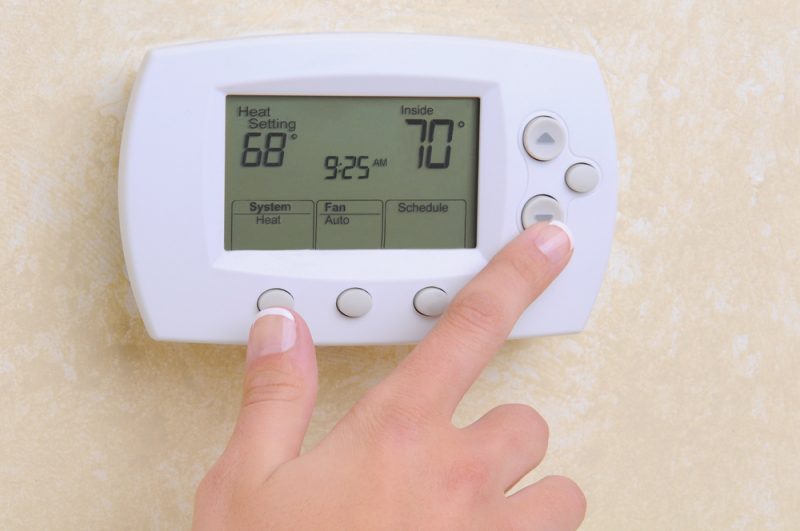National Energy & Utility Affordability Coalition urging Congress to protect LIHEAP program

The average cost to heat a home was $783 in 2016, up 8.1 percent from the year before, according to the National Energy Assistance Directors’ Association.
The Low-Income Home Energy Assistance Program (LIHEAP) is one of the programs helping subsidize those costs for low-income families.
To qualify for LIHEAP, a household can make up to 150 percent of Federal Poverty Guidelines or 60 percent of median income. A three-person family in the United States, for instance, would have to make less than $30,630. The average LIHEAP three-person household makes around $17,000 each year.
“As we see temperatures growing more extreme during both the winter and the summer in the United States, those extreme weather events have a huge impact,” Katrina Metzler, executive director of the National Energy & Utility Affordability Coalition, told Daily Energy Insider. “The reason it’s important is they’re grandmothers, protecting them when they’re in their homes and not letting anyone freeze to death in their own home. So in the winter, that’s the most important thing, but LIHEAP’s also used in the summer, in the south.”
LIHEAP not only provides subsidies for heating and cooling but also helps weatherize homes to lower heating costs for the future. There are currently 35 million people in the United States who qualify for LIHEAP, and only one in five of them are receiving assistance.
The House Appropriations Committee’s Fiscal Year 2019 Labor, Health and Human Services, Education Funding Bill includes LIHEAP funding of $3.64 billion. Although it is part of the larger bill, Metzler said Congress has been in support of continuing the program. They are, however, fighting a battle to keep it going.
“The Trump Administration has zeroed out the program every year since he’s been in office, and we don’t expect that to change,” Metzler said. “It’s just not a priority with this particular administration, but it is a priority with Congress. So we have been able to get the message to our representatives in Congress that this is an important program that saves lives and stabilizes families. People have to make choices between paying their utility bill or paying for their medicine or food. And those are difficult choices that no one should have to make.”
The draft version of the appropriations bill includes $177.1 billion in discretionary funding, which is around the same amount as the 2018 budget. Included in that amount is $12.1 billion to be directed toward the Department of Labor, $89.2 billion to the Department of Health and Human Services, $7.6 billion to the Centers for Disease Control and Prevention, $5.6 billion to the Substance Abuse and Mental Health Administration, and $6.5 billion to Health Resources and Services Administration.
The LIHEAP funds are under the Department of Health and Human Services.
“This bill funds critical programs that will protect and save lives both now and in the future, and help prepare the next generation to be part of a productive workforce to grow our economy and provide for their families,” House Appropriations Chairman Rodney Frelinghuysen said in a statement. “This includes investments in vital research to cure diseases such as cancer and Alzheimer’s, job training, college preparation, and special education programs and protections against health threats such as pandemics and bio-threats.”
Of the households that receive funding from LIHEAP, 70 percent have at least one member who is elderly or disabled or have a child under the age of six. LIHEAP benefits utilities as well, in that they are not spending staffing on collections or having to turn off the heat or cooling from their customers.
“LIHEAP enjoys support from both sides of the aisle, and that’s something that we hope to continue,” Metzler said. “By and large, they’ve listened and understood how necessary it is to keep people safe and healthy and warm in the winter and cool in the summer. So we’ve enjoyed support from Congress. They’ve not only reinstated the program, but they’ve also in the house proposed an increase, and we are just crossing our fingers and hopeful that, that will go through. In the current political environment, that would be a huge victory, and we don’t take anything for granted.”
Hashtags like #LIHEAP, #SaveLIHEAP, and #LIHEAPACTION have been trending for months on social media, with lawmakers and energy assistance agencies tweeting about the bill and what it means to those who have been recipients. Actress Alyssa Milano even tweeted about the subject earlier this summer.
Metzler said that they do not know where the bill stands this year because there has been no vote and so there is no official budget for FY 2019, but they did see a “small increase” in funding in FY 2018.
“I do think that maybe that sends a message from Congress to the administration that programs that are important and that impact community health,” Metzler said. “Those are not going to go away.”
